
USS LST-519 was an LST-491-class tank landing ship built for the U.S. Navy in World War II. She was later renamed USS Calhoun County (LST-519) after counties in eleven states in the United States.

USS LST-31 was a United States Navy LST-1-class tank landing ship used exclusively in the Asiatic-Pacific Theater during World War II. Like many of her class, she was not originally named and is properly referred to by her hull designation. Later she was named for Addison County, Vermont. She was the only US Naval vessel to bear the name.
USS Armstrong County (LST-57) was an LST-1-class tank landing ship built for the United States Navy during World War II. Named for counties in Pennsylvania, South Dakota, and Texas, she was the only U.S. Naval vessel to bear the name.

USS Atchison County (LST-60) was an LST-1-class tank landing ship built for the United States Navy during World War II. Named for counties in Kansas and Missouri established in honor of David Rice Atchison, a mid-19th century Democratic United States Senator from Missouri, she was the only U.S. Naval vessel to bear the name.

USS LST-209 was an LST-1-class tank landing ship built for the United States Navy during World War II. Like most of the ships of her class, she was not originally named, and known only by her designation. From June to August 1951 she served a stint as a part of the Military Sea Transportation Service (MSTS), manned by a civilian crew, and renamed USNS T-LST-209. She was recommissioned under her original name 24 August 1951, and renamed USS Bamberg County (LST-209) on 1 July 1955. She was named for Bamberg County, South Carolina, the only U.S. Naval vessel to bear the name.

USS Benzie County (LST-266) was an LST-1-class tank landing ship built for the United States Navy during World War II. Named for Benzie County, Michigan, she was the only U.S. Naval vessel to bear the name.
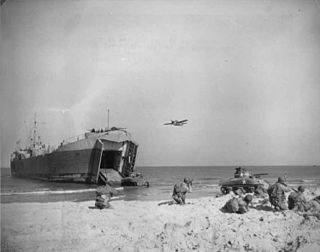
USS Berkshire County (LST-288) was an LST-1-class tank landing ship built for the United States Navy during World War II. Named for Berkshire County, Massachusetts, she was the only U.S. naval vessel to bear the name.

USS Bernalillo County (LST-306) was an LST-1-class tank landing ship built for the United States Navy during World War II. Named for Bernalillo County, New Mexico, she was the only U.S. Naval vessel to bear the name.

USS Blanco County (LST-344) was an LST-1-class tank landing ship built for the United States Navy during World War II. Named for Blanco County, Texas, she was the only U.S. Naval vessel to bear the name.

USS LST-356 was an LST-1-class tank landing ship built for the United States Navy during World War II. She earned three battle stars during the war and was decommissioned in July 1946. In July 1955, she was assigned the name USS Bledsoe County (LST-356) in honor of Bledsoe County, Tennessee, but never saw active service under that name. Bledsoe County was struck from the Naval Vessel Register in September 1960 and sold for scrapping in March 1961. She was apparently sold into commercial service in 1962 instead, serving under several names over the next five years. In 1967, she was acquired by the Indonesian Navy and renamed KRI Teluk Tomini (508). In 2012, the ship was decommissioned and scrapped.
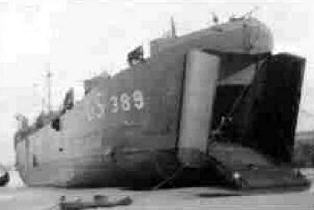
USS Boone County (LST-389) was an LST-1-class tank landing ship built for the United States Navy during World War II. Named for counties in Arkansas, Illinois, Indiana, Iowa, Kentucky, Missouri, Nebraska, and West Virginia, she was the only U.S. Naval vessel to bear the name.

USS Buncombe County (LST-510) was an LST-491-class tank landing ship built for the United States Navy during World War II. Named for Buncombe County, North Carolina, she was the only U.S. Naval vessel to bear the name. She currently serves as a ferry between New London, Connecticut, and Orient, Long Island.

USS Middlesex County (LST-983) was an LST-542-class tank landing ship built for the United States Navy during World War II. Named after counties in Connecticut, Massachusetts, New Jersey, and Virginia, she was the only U.S. Naval vessel to bear the name.
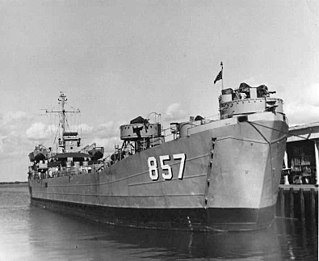
USS King County (LST-857) was an LST-542-class tank landing ship built for the United States Navy during World War II. Named after counties in Texas and Washington, she was the only U.S. Naval vessel to bear the name.
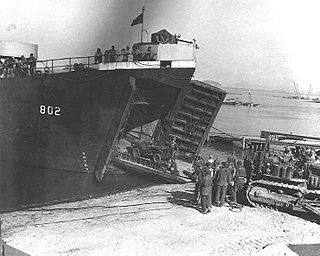
USS Hamilton County (LST-802) was an LST-542-class tank landing ship built for the United States Navy during World War II. Named after counties in Florida, Illinois, Indiana, Iowa, Kansas, Nebraska, New York, Ohio, Tennessee, and Texas, she was the only U.S. Naval vessel to bear the name.
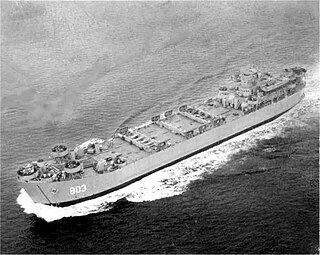
The USS Hampden County (LST-803) was an LST-542-class tank landing ship built for the United States Navy during World War II. Named after Hampden County, Massachusetts, she was the only U.S. Naval vessel to bear the name.
USS LST-850 was an LST-542-class tank landing ship built for the United States Navy during World War II. Late in her career, she was renamed Juniata County (LST-850)—after Juniata County, Pennsylvania, the only U.S. Naval vessel to bear the name—but never saw active service under that name.

USS Lafayette County (LST-859) was an LST-542-class tank landing ship built for the United States Navy during World War II. Named after counties in Arkansas, Florida, Mississippi, Missouri, and Wisconsin, and a parish in Louisiana, she was the only U.S. Naval vessel to bear the name.

USS Mahnomen County (LST-912) was an LST-542-class tank landing ship built for the United States Navy during World War II. Like many of her class, she was not named and is properly referred to by her hull designation. She was later named after Mahnomen County, Minnesota, and was the only US Navy vessel to bear the name.

USS LST-16 was a LST-1-class tank landing ship built for the U.S. Navy during World War II. Like most ships in her class, she was not named and was known only by her designation. She was staffed by a U.S. Coast Guard crew throughout her service career.



















